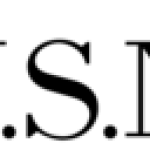- Industry: Government
- Number of terms: 11131
- Number of blossaries: 0
- Company Profile:
Uranium enriched to at least 20 percent uranium-235 (a higher concentration than exists in natural uranium ore).
Industry:Energy
The highly radioactive materials produced as byproducts of fuel reprocessing or of the reactions that occur inside nuclear reactors. HLW includes:
* Irradiated spent nuclear fuel discharged from commercial nuclear power reactors
* The highly radioactive liquid and solid materials resulting from the reprocessing of spent nuclear fuel, which contain fission products in concentration (this includes some reprocessed HLW from defense activities and a small quantity of reprocessed commercial HLW)
Industry:Energy
Any area with dose rates greater than 100 millirems (1 millisievert) in one hour 30 centimeters from the source or from any surface through which the ionizing radiation penetrates. Areas at licensee facilities must be posted as "high radiation areas" and access into these areas is maintained under strict control.
Industry:Energy
A reactor that uses heavy water as its moderator. Heavy water is an excellent moderator and thus permits the use of unenriched uranium as a fuel.
Industry:Energy
Water containing significantly more than the natural proportions (one in 6,500) of heavy hydrogen (deuterium, D) atoms to ordinary hydrogen atoms. Heavy water is used as a moderator in some reactors because it slows down neutrons effectively and also has a low probability of absorption of neutrons.
Industry:Energy
The rise in temperature of the reactor fuel rods resulting from an increase in the rate of fission in the core.
Industry:Energy
Any device that transfers heat from one fluid (liquid or gas) to another fluid or to the environment.
Industry:Energy
Anything that absorbs heat. It is usually part of the environment, such as the air, a river, or a lake.
Industry:Energy
The science concerned with recognizing and evaluating the effects of ionizing radiation on the health and safety of people and the environment, monitoring radiation exposure, and controlling the associated health risks and environmental hazards to permit the safe use of technologies that produce ionizing radiation. For further information, see Frequently Asked Questions About Health Physics Based on 10 CFR Part 20.
Industry:Energy
A method of extracting uranium from ore using a leaching solution. Small ore pieces are placed in a heap on an impervious material (plastic, clay, asphalt) with perforated pipes under the heap. Acidic solution is then sprayed over the ore, dissolving the uranium. The solution in the pipes is collected and transferred to an ion-exchange system for concentration of the uranium.
Industry:Energy
